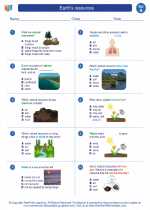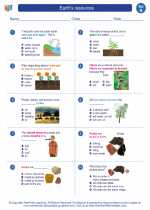Seasons
Seasons are the four divisions of the year marked by particular weather patterns and daylight hours. The four seasons are spring, summer, fall, and winter. These changes occur because of the tilt of the Earth's axis and its orbit around the sun.
Causes of Seasons
The Earth's axis is tilted at an angle of about 23.5 degrees. This tilt causes different parts of the Earth to receive varying amounts of sunlight at different times of the year, leading to the changes in seasons. When a particular hemisphere is tilted towards the sun, it experiences summer, while when it is tilted away from the sun, it experiences winter.
Effects of Seasons
Each season has its own unique characteristics. Spring is known for blooming flowers and warmer temperatures, while summer brings long days and hot weather. Fall is marked by falling leaves and cooler temperatures, and winter is characterized by cold weather and, in some regions, snow and ice.
Study Guide
- What are the four seasons?
- What causes the changes in seasons?
- Describe the characteristics of each season.
- How does the tilt of the Earth's axis contribute to the occurrence of seasons?
- What are some activities or events associated with each season?
Conclusion
Understanding the concept of seasons is important for understanding the natural world around us. By learning about the causes and effects of seasons, we can better appreciate and adapt to the changing environment throughout the year.
.◂Science Worksheets and Study Guides First Grade. Earth's resources

 Worksheet/Answer key
Worksheet/Answer key
 Worksheet/Answer key
Worksheet/Answer key
 Worksheet/Answer key
Worksheet/Answer key
 Vocabulary/Answer key
Vocabulary/Answer key
 Vocabulary/Answer key
Vocabulary/Answer key
